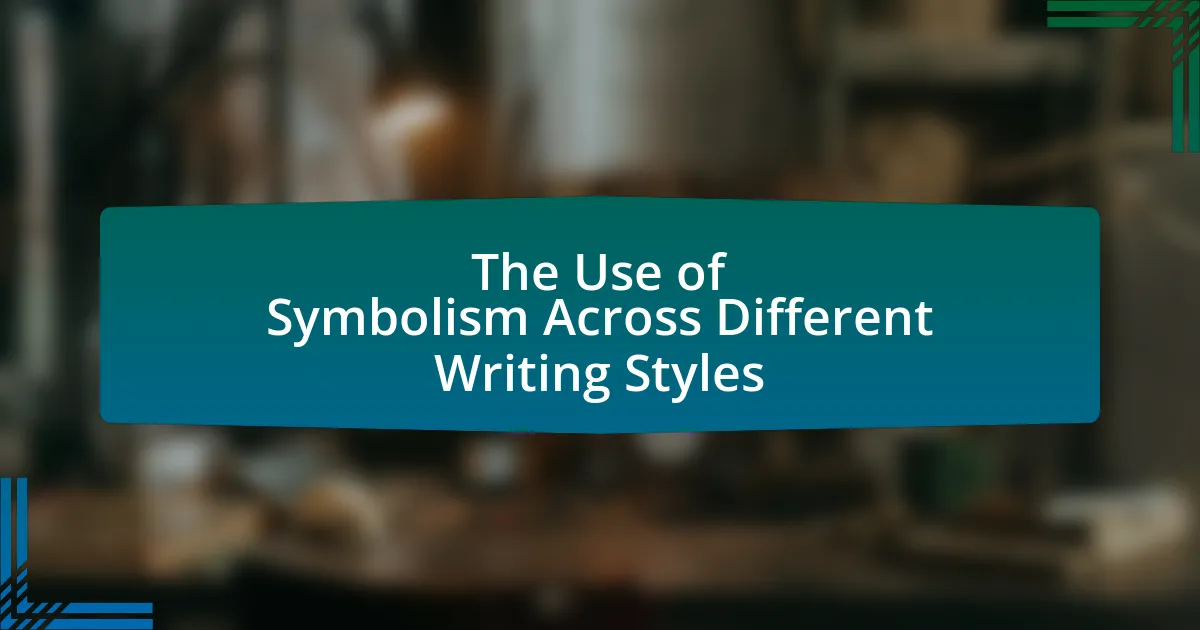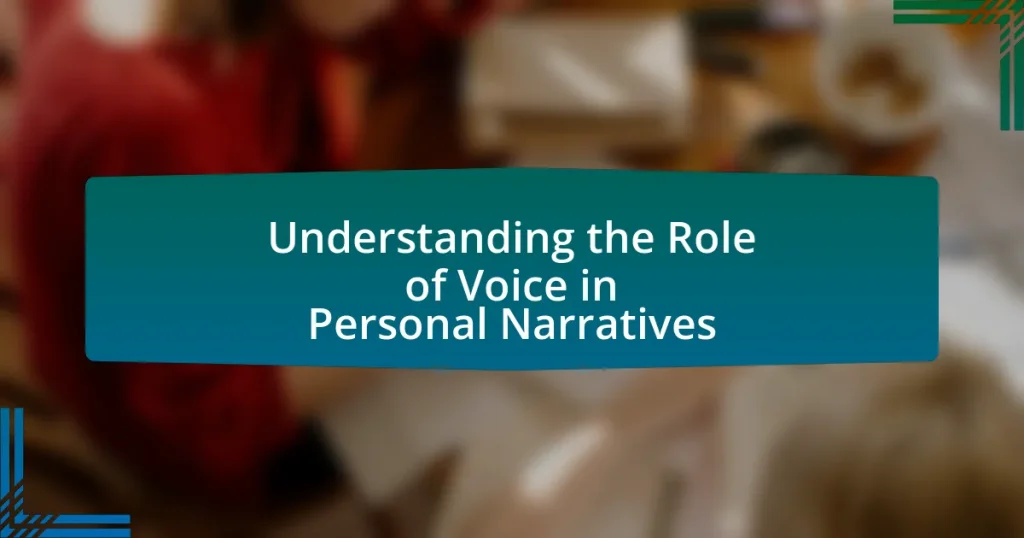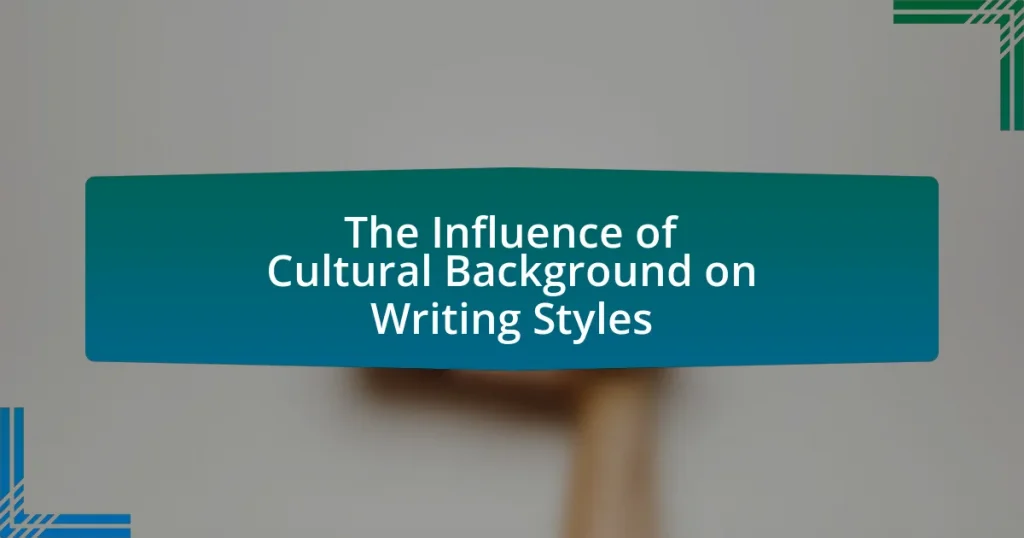The article focuses on the role of symbolism in writing across various styles, emphasizing its importance in conveying deeper meanings and enhancing emotional resonance within narratives. It explores how symbolism enriches literary expression, aids in character development, and influences plot progression. Different types of symbols, including archetypal, conventional, and personal symbols, are discussed, along with their impact on reader interpretation. The article also addresses the challenges and best practices for effectively integrating symbolism, providing practical tips for writers to enhance their symbolic writing skills.
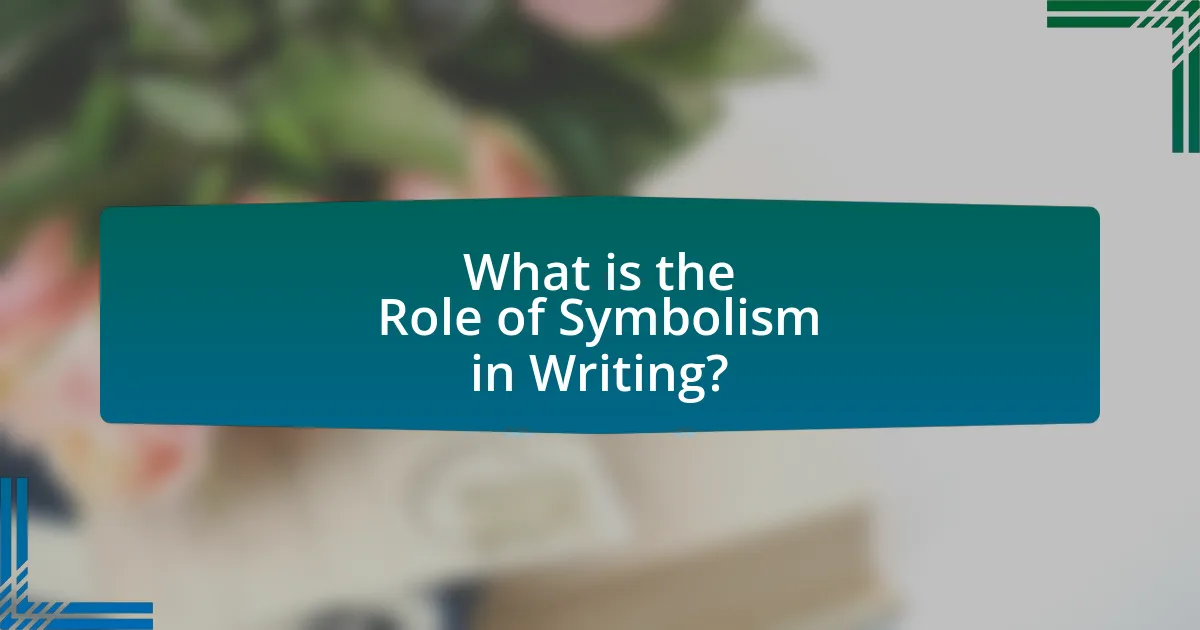
What is the Role of Symbolism in Writing?
The role of symbolism in writing is to convey deeper meanings and enhance the emotional resonance of a narrative. Symbolism allows writers to represent complex ideas and themes through tangible objects, characters, or events, enabling readers to engage with the text on multiple levels. For instance, in George Orwell’s “Animal Farm,” the farm animals symbolize different societal classes, illustrating the dynamics of power and corruption. This use of symbolism not only enriches the narrative but also invites critical analysis, making the text more impactful and thought-provoking.
How does symbolism enhance literary expression?
Symbolism enhances literary expression by allowing authors to convey complex ideas and emotions through representative images and motifs. This technique deepens the reader’s understanding and engagement with the text, as symbols can evoke multiple layers of meaning beyond the literal interpretation. For example, in George Orwell’s “Animal Farm,” the farm itself symbolizes the rise of totalitarianism, illustrating political themes through the allegorical representation of animals. Such use of symbolism not only enriches the narrative but also invites readers to explore broader societal issues, making the literary work more impactful and thought-provoking.
What are the different types of symbols used in literature?
Different types of symbols used in literature include archetypal symbols, conventional symbols, and personal symbols. Archetypal symbols, such as the hero or the journey, represent universal themes and ideas recognized across cultures. Conventional symbols, like a dove symbolizing peace, are widely accepted meanings within a specific culture or context. Personal symbols are unique to an individual author or character, representing specific meanings based on personal experiences or emotions. These classifications help readers interpret deeper meanings within literary works, enhancing their understanding of themes and character motivations.
How do symbols convey deeper meanings in texts?
Symbols convey deeper meanings in texts by representing abstract ideas or concepts through tangible objects or images. For instance, in literature, a dove often symbolizes peace, while a storm may represent turmoil or conflict. This use of symbolism allows authors to convey complex themes and emotions succinctly, enhancing the reader’s understanding and engagement with the text. The effectiveness of symbols lies in their ability to evoke emotional responses and provoke thought, as seen in works like George Orwell’s “Animal Farm,” where the farm animals symbolize different societal roles and political ideologies, illustrating the complexities of power and corruption.
Why is symbolism important across various writing styles?
Symbolism is important across various writing styles because it enhances the depth and meaning of a narrative, allowing writers to convey complex ideas and emotions succinctly. By using symbols, authors can create layers of significance that resonate with readers, facilitating a deeper understanding of themes and character motivations. For instance, in literature, the green light in F. Scott Fitzgerald’s “The Great Gatsby” symbolizes unattainable dreams, illustrating the broader theme of the American Dream’s elusiveness. This use of symbolism not only enriches the text but also engages readers on an emotional level, prompting them to explore interpretations beyond the literal.
How does symbolism differ in poetry compared to prose?
Symbolism in poetry often relies on condensed imagery and emotional resonance, while in prose, it tends to be more explicit and narrative-driven. In poetry, symbols are frequently layered and open to interpretation, allowing for multiple meanings that evoke feelings and thoughts in a compact form. For instance, a single image, like a rose, can symbolize love, beauty, or even secrecy, depending on the context. In contrast, prose typically uses symbols within a broader narrative framework, where their meanings are often clarified through character development and plot progression. This difference is evident in works like “The Great Gatsby,” where the green light symbolizes Gatsby’s unattainable dreams, serving a clear narrative purpose. Thus, while both forms utilize symbolism, poetry emphasizes brevity and emotional depth, whereas prose focuses on clarity and context within a larger story.
What impact does symbolism have on reader interpretation?
Symbolism significantly influences reader interpretation by adding layers of meaning to texts. When authors employ symbols, they invite readers to engage with the narrative on a deeper level, prompting them to explore themes, emotions, and ideas that may not be explicitly stated. For instance, in literature, a red rose often symbolizes love, allowing readers to infer emotional connections and underlying sentiments without direct exposition. This interpretative engagement enhances the reading experience, as evidenced by studies showing that readers who recognize and analyze symbolism tend to have a richer understanding of the text’s themes and character motivations.
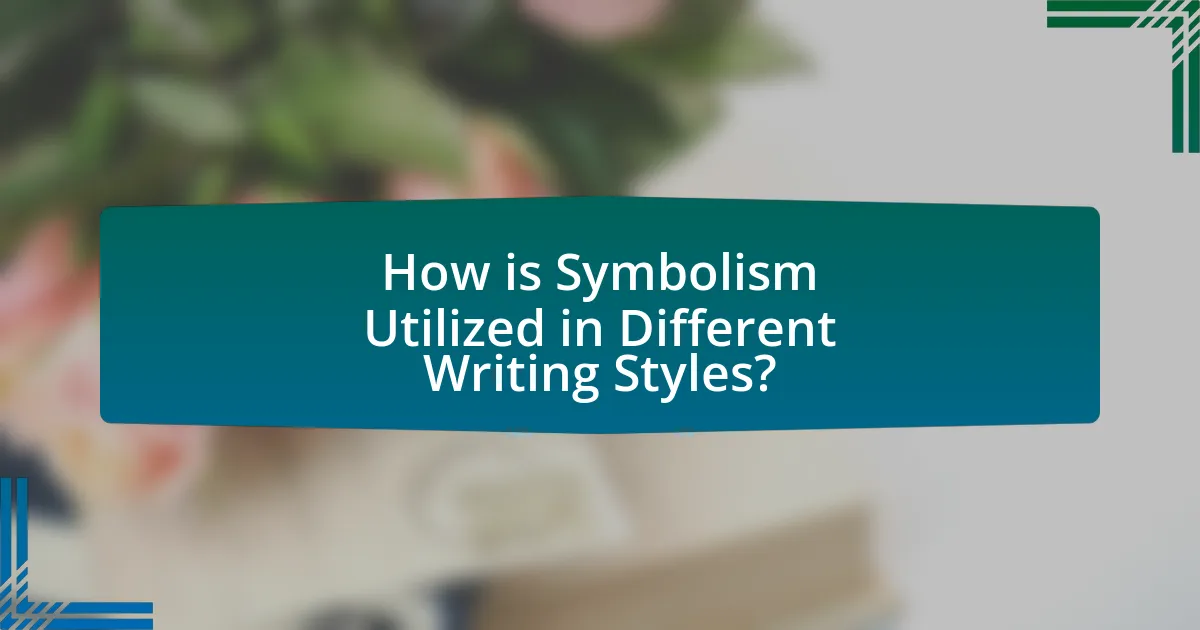
How is Symbolism Utilized in Different Writing Styles?
Symbolism is utilized in different writing styles to convey deeper meanings and enhance thematic elements. In literary fiction, authors often employ symbols to represent complex ideas, such as the green light in “The Great Gatsby,” which symbolizes unattainable dreams. In poetry, symbolism is frequently used to evoke emotions and create imagery, as seen in the use of the rose to symbolize love or beauty. In contrast, in non-fiction writing, symbolism may serve to illustrate concepts or arguments, such as using the eagle to symbolize freedom in political discourse. Each writing style adapts symbolism to fit its purpose, enriching the reader’s experience and understanding of the text.
What are the characteristics of symbolism in fiction?
Symbolism in fiction is characterized by the use of symbols to represent ideas, emotions, or concepts beyond their literal meaning. This technique allows authors to convey deeper meanings and themes, enriching the narrative. For instance, in literature, a rose may symbolize love, while a storm can represent turmoil or conflict. The effectiveness of symbolism lies in its ability to evoke emotional responses and provoke thought, as seen in works like “The Great Gatsby,” where the green light symbolizes Gatsby’s unattainable dreams. Such characteristics enhance the reader’s engagement and interpretation, making symbolism a powerful tool in fiction.
How do authors use symbolism to develop characters?
Authors use symbolism to develop characters by assigning specific objects, colors, or actions that represent deeper meanings related to the characters’ traits, emotions, or journeys. For instance, in F. Scott Fitzgerald’s “The Great Gatsby,” the green light symbolizes Gatsby’s unattainable dreams and desires, reflecting his character’s hope and ultimately his tragic fate. This use of symbolism allows readers to gain insight into the characters’ motivations and conflicts, enhancing the narrative’s emotional depth and complexity.
What role does symbolism play in plot development?
Symbolism plays a crucial role in plot development by enhancing themes and character arcs, thereby deepening the narrative. Through symbols, writers can convey complex ideas and emotions succinctly, allowing readers to engage with the story on multiple levels. For instance, in literature, a recurring symbol such as a storm may represent turmoil or conflict, directly influencing character decisions and plot progression. This technique is evident in works like “The Great Gatsby,” where the green light symbolizes Gatsby’s unattainable dreams, driving the plot and character motivations. Thus, symbolism not only enriches the narrative but also serves as a pivotal mechanism for advancing the plot.
How does symbolism manifest in poetry?
Symbolism in poetry manifests through the use of symbols to represent ideas, emotions, or concepts beyond their literal meaning. Poets employ objects, colors, or actions as symbols to convey deeper meanings and evoke emotional responses. For example, in Robert Frost’s poem “The Road Not Taken,” the diverging roads symbolize choices in life, illustrating the theme of decision-making and its consequences. This technique allows poets to communicate complex ideas succinctly, engaging readers’ imaginations and encouraging personal interpretation.
What techniques do poets use to incorporate symbolism?
Poets incorporate symbolism through techniques such as metaphor, imagery, and allegory. Metaphor allows poets to draw direct comparisons between unrelated subjects, creating deeper meanings; for example, in Robert Frost’s “The Road Not Taken,” the road symbolizes life choices. Imagery engages the senses to evoke emotions and associations, as seen in William Blake’s “The Lamb,” where the lamb symbolizes innocence and purity. Allegory conveys complex ideas through symbolic narratives, exemplified in John Bunyan’s “The Pilgrim’s Progress,” where the journey represents the spiritual path. These techniques effectively enhance the thematic depth of poetry by embedding layers of meaning within symbols.
How does the use of symbolism affect the emotional tone of a poem?
The use of symbolism significantly affects the emotional tone of a poem by conveying deeper meanings and evoking specific feelings in the reader. Symbolism allows poets to represent complex ideas and emotions through tangible images, which can intensify the emotional impact of the poem. For instance, in Robert Frost’s “The Road Not Taken,” the diverging paths symbolize choices in life, creating a tone of contemplation and nostalgia. This use of symbolic imagery enhances the reader’s emotional experience by prompting reflection on their own life decisions. Thus, symbolism serves as a powerful tool in shaping the emotional landscape of poetry.
What is the significance of symbolism in non-fiction writing?
Symbolism in non-fiction writing serves to convey complex ideas and emotions succinctly, enhancing the reader’s understanding and engagement. By using symbols, authors can encapsulate broader themes and concepts, allowing readers to connect with the material on a deeper level. For instance, in historical narratives, symbols like the American flag can represent patriotism, sacrifice, or national identity, thereby enriching the text’s meaning. This use of symbolism is supported by studies showing that readers often recall symbolic representations more effectively than straightforward descriptions, indicating that symbolism plays a crucial role in memory retention and emotional resonance in non-fiction literature.
How can symbolism be used to persuade or inform readers?
Symbolism can be used to persuade or inform readers by conveying complex ideas and emotions through representative images or concepts. For instance, in literature, a red rose often symbolizes love, allowing authors to evoke feelings associated with romance without explicitly stating them. This technique engages readers’ emotions and encourages them to interpret the underlying messages, enhancing their understanding of the text. Additionally, in political discourse, symbols like the dove represent peace, effectively communicating a stance on conflict resolution. Research indicates that symbols can trigger emotional responses, making them powerful tools for persuasion and information dissemination.
What examples illustrate the use of symbolism in essays or articles?
Symbolism in essays and articles can be illustrated through various examples. In George Orwell’s “Animal Farm,” the farm animals symbolize different social classes and political figures, representing the Russian Revolution and its aftermath. Similarly, in Virginia Woolf’s “To the Lighthouse,” the lighthouse itself symbolizes unattainable goals and the passage of time, reflecting the characters’ inner struggles. These examples demonstrate how symbolism enriches the narrative by conveying deeper meanings and themes, allowing readers to engage with the text on multiple levels.
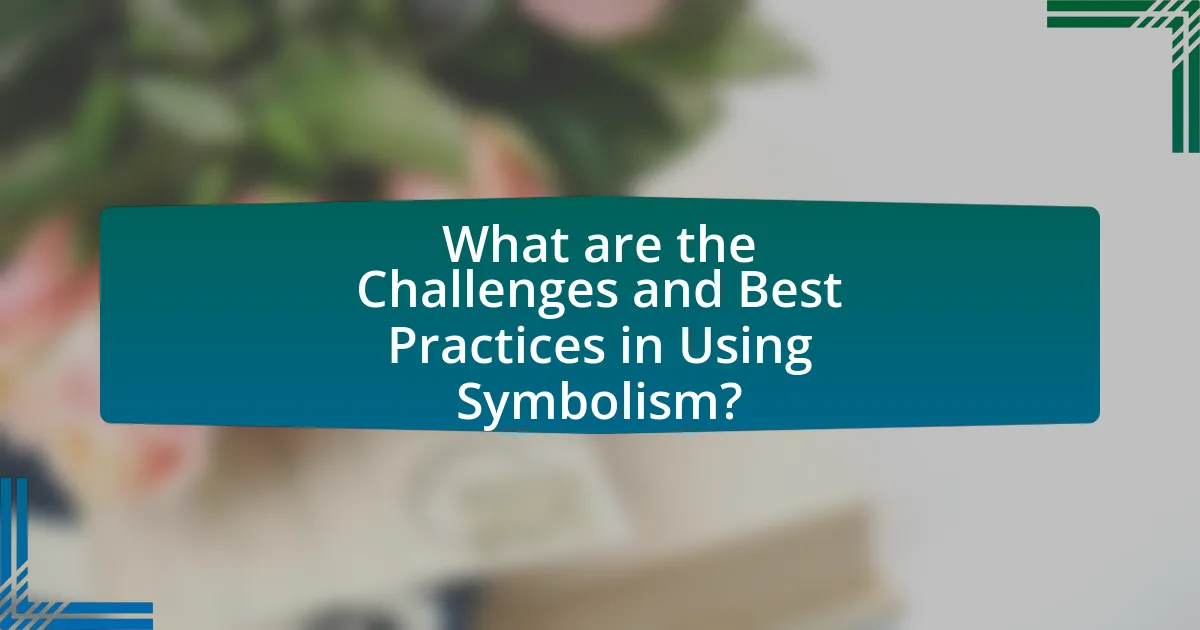
What are the Challenges and Best Practices in Using Symbolism?
The challenges in using symbolism include misinterpretation by the audience and overcomplication of the narrative. Misinterpretation occurs when symbols are not universally understood, leading to confusion about the intended message. Overcomplication can arise when excessive symbolism detracts from the main theme, making the writing less accessible. Best practices for using symbolism involve ensuring clarity and relevance. Writers should choose symbols that resonate with the audience and enhance the narrative without overwhelming it. For instance, in literature, the use of a simple, well-defined symbol can effectively convey complex themes, as seen in George Orwell’s “Animal Farm,” where the farm animals symbolize different societal classes, making the political commentary clear and impactful.
What common pitfalls should writers avoid when using symbolism?
Writers should avoid overcomplicating symbolism, as excessive or unclear symbols can confuse readers and dilute the intended message. When symbols are too abstract or not well-integrated into the narrative, they fail to resonate with the audience, leading to misinterpretation. For instance, in literature, symbols should enhance the story rather than distract from it; a well-known example is the green light in “The Great Gatsby,” which effectively conveys themes of hope and unattainable dreams due to its clear contextual relevance. Additionally, writers should refrain from using clichés as symbols, as they can come across as unoriginal and fail to evoke the desired emotional response. By ensuring that symbols are clear, relevant, and thoughtfully integrated, writers can effectively communicate deeper meanings without alienating their audience.
How can overuse of symbolism detract from a narrative?
Overuse of symbolism can detract from a narrative by overwhelming the reader and obscuring the story’s core message. When symbolism is excessively employed, it can lead to confusion, as readers may struggle to discern the intended meanings behind multiple symbols. This dilution of clarity can result in a narrative that feels convoluted rather than engaging. For instance, in literature, excessive symbolism can shift focus away from character development and plot progression, causing readers to become disengaged. A study by literary critic Northrop Frye emphasizes that while symbolism enriches a narrative, its overuse can transform it into a puzzle rather than a cohesive story, ultimately diminishing the reader’s emotional connection to the text.
What strategies can writers employ to effectively integrate symbolism?
Writers can effectively integrate symbolism by carefully selecting symbols that resonate with the themes and emotions of their narrative. This involves identifying key concepts within the story and choosing objects, characters, or actions that represent these ideas, thereby enhancing the depth of the narrative. For instance, in literature, the use of a recurring motif, such as a specific color or natural element, can symbolize broader themes like love, death, or freedom, as seen in works like “The Great Gatsby,” where the green light symbolizes Gatsby’s unreachable dreams. Additionally, writers should ensure that the symbolism is woven seamlessly into the plot and character development, allowing readers to uncover layers of meaning without overt explanation. This technique not only enriches the reading experience but also encourages deeper engagement with the text.
How can writers enhance their use of symbolism?
Writers can enhance their use of symbolism by integrating multi-layered meanings into their symbols, allowing them to resonate on emotional, thematic, and contextual levels. This approach encourages readers to engage more deeply with the text, as symbols can represent complex ideas or emotions, such as freedom represented by a bird or love symbolized by a rose. Research indicates that effective symbolism can significantly enrich narrative depth; for instance, in literature, symbols often serve as a bridge between the text and the reader’s personal experiences, enhancing relatability and interpretation. By carefully selecting symbols that align with the overarching themes of their work, writers can create a more immersive and thought-provoking experience for their audience.
What exercises can help improve symbolic writing skills?
Exercises that can help improve symbolic writing skills include journaling with a focus on metaphor, practicing visual imagery through drawing, and engaging in creative writing prompts that encourage symbolism. Journaling with metaphors allows writers to explore deeper meanings and connections, enhancing their ability to convey complex ideas symbolically. Drawing visual imagery helps writers translate abstract concepts into tangible symbols, fostering creativity. Creative writing prompts that specifically ask for symbolic elements challenge writers to think critically about the use of symbols in their narratives, thereby refining their skills. These exercises are supported by educational research indicating that practice in these areas can lead to improved symbolic thinking and writing proficiency.
How can feedback from peers improve the use of symbolism in writing?
Feedback from peers can enhance the use of symbolism in writing by providing diverse perspectives that highlight the effectiveness and clarity of symbolic elements. When writers receive input from peers, they can identify whether their symbols resonate with readers or if they require further development for better understanding. For instance, peer feedback can reveal if a symbol is too obscure or if it effectively conveys the intended theme, allowing the writer to refine their use of symbolism accordingly. Studies in writing pedagogy indicate that collaborative feedback processes significantly improve the quality of writing, as they encourage critical thinking and deeper engagement with the text.
What are some practical tips for incorporating symbolism in writing?
To incorporate symbolism in writing effectively, writers should identify key themes and select symbols that resonate with those themes. For instance, using a recurring object, like a rose, can symbolize love or beauty throughout a narrative. Writers should also ensure that the symbols are contextually relevant and enhance the reader’s understanding of the characters or plot. Additionally, subtlety is crucial; over-explaining symbols can diminish their impact. Historical examples, such as the green light in “The Great Gatsby,” illustrate how a well-placed symbol can convey complex ideas and emotions, enriching the narrative.
